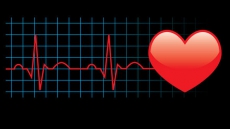Low levels of joint attention - the act of making eye contact with another person to share an experience - without a positive affective component (a smile) in the first year is linked to high risk of autism disorder, says a study.
Early joint attention initiation without smiling - matter-of-fact looking at a person to communicate interest in a toy - was negatively associated with Autism Spectrum Disorder (ASD) symptoms, the findings showed.
"The ability to coordinate attention with another person without a smile, without an emotional component, seems to be particularly important for high-risk siblings in the development of ASD symptoms," said Devon Gangi from University of Miami, US.
"The detection of markers associated with autism early in life, before a child can be diagnosed with autism, is important to help identify children at the greatest need for early interventions," Gangi said.
Some babies are at risk for autism because they have an older sibling that has the disorder.
According to the study, the less joint attention without smiling at 8 months in a high-risk sibling, the more likely they were to have elevated ASD symptoms by 30 months.
Less early initiating of joint attention without smiling is a particularly important skill for high-risk siblings, the study added.
The researchers primarily predicted the children's symptom level. Symptoms vary in at-risk siblings, some of whom have an ASD outcome and some of whom do not. They did not look at whether the younger sibling eventually received an ASD diagnosis.
The study appeared in the Journal of Autism and Developmental Disorders.





